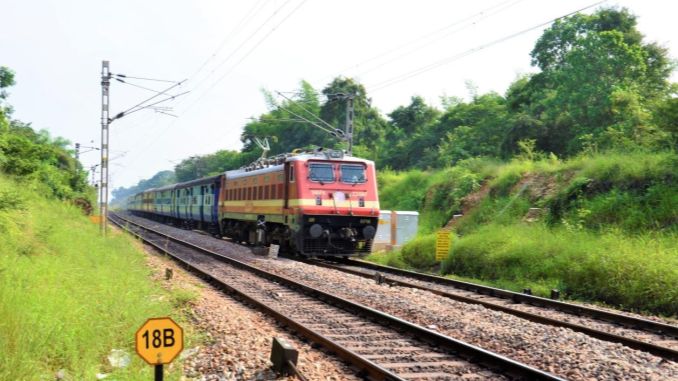
The Northeast Frontier Railway (N.F. Railway) is making significant strides in expanding railway connectivity and enhancing infrastructure despite facing challenges posed by rugged terrain. The region’s breathtaking beauty is matched only by the complexities it presents for railway expansion. However, the Indian Railways remains steadfast in its commitment to providing seamless connectivity to this region.
More Details:
Breakthrough in Tunnel no. 4 of Dimapur – Kohima New BG Single line Project achieved:
N.F. Railway recently achieved a major milestone in the second phase of the project. Breakthrough of Tunnel no. 4 between Molvom – Pherima station that measures 1319 metres in length including 151 metres cut and cover got done on 24th January, 2024. This is the 2nd longest tunnel in phase-II of the project. This achievement is considered a major step ahead for connecting Kohima with the rest of the nation through the Indian Railways network.
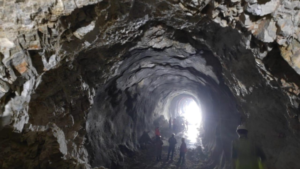
Image Credit (representational): MoR
Brief about Project:
- The construction of the tunnel was started from the portal – 1 side on 10.03.2021. Work from Portal – 2 has started on 23.01.2023. The rock strata encountered are mainly shale and extremely weathered in nature with seepage of water present at few locations, inside the tunnel.
- To construct the tunnel railways had to face lots of problems as continuous rains since April, 2022 and extremely poor quality of soil in Tunnel no. 4 has led to squeezing and sliding at the portal – 2 affecting the progress. Guidance from the Geological Survey of India and independent consultants were sought to solve the problems.
- The average rate of underground excavation is 41.25 metres per month. The underground excavation work is executed by using New Austrian Tunneling Method (NATM), and by deploying 210 no’s of manpower round the clock since the starting of the tunnel. With the final breakthrough of the tunnel, underground excavation of 1168 metres has been completed. Final lining of the tunnel is targeted for completion in May, 2024.
- The total length of project is 82.5 km (2.75 Km in Assam and 79.75 Km in Nagaland) having 08 new stations viz Dhansiri, Dhansiripar, Shokhuvi, Molvom, Pherima, Piphema, Menguzuma and Zubza. The project includes 24 major bridges, 156 minor bridges, 06 Road Over Bridges, 15 Road Under Bridges and 21 Tunnels of 31 km length. The total anticipated cost of the project is Rs. 6,663 crores.
The new rail connectivity project when completed will also help in transportation of food grains, automobiles and other infrastructural & construction items to the hilly state at a much cheaper cost from other parts of the country benefitting local people. Economy of the state will receive a major boost.
Roof top solar panels of NFR generating 6110 kwp:
Roof-Top Solar power plants have been commissioned throughout the Northeast Frontier Railway generating 6110.233 Kilo-Watt Peak (kwp) till December, 2023. This will, in turn, save 46.83 lakh units that amounts to approximately Rs 3.74 crore annually in energy bills.
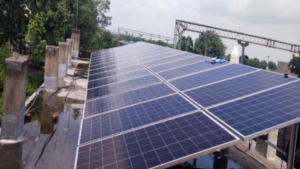
Image Credit (representational): Central Railway
Under ‘Go-Green’ mission:
- Under the ‘Go-Green’ mission, 45 stations and other service buildings of Assam have been fitted with solar rooftop panels generating 4509 kwp.
- 24 stations in West Bengal have been fitted with solar roof top panel generating 554.20 kwp; 11 stations in Bihar have been fitted with solar roof top panel generating 390 kwp;
- 16 stations in Tripura have been fitted with solar roof top panels generating 335 kwp;
- 02 stations in Nagaland and
- 01 station in Meghalaya have been fitted with solar roof top panels generating 120 kwp and 10 kwp respectively.
- Apart from this, 192.033 kwp of solar roof top systems were commissioned at 388 no’s of level crossing gates of Assam, Bihar & West Bengal.
Target to Achieve:
- In the last quarter of the current financial year, to meet the energy requirements, NFR is all set to commission 1871 kwp capacity of solar roof top systems in its jurisdiction.
- These include 892 kwp in various locations of Rangiya Division, 384 kwp in Northeast Frontier Railway Sports Complex, Maligaon.
- In addition to this, 495 kwp & 100 kwp are planned to be commissioned in various stations and service buildings of Lumding and Alipurduar division respectively.
NFR is committed to utilise solar energy for meeting its energy requirements which will help in meeting power needs of all the stations and save precious expenditure for the Railways and the country apart from being environment friendly.
Construction of ROBs and RUBs, To improve safety in train operations and for road users:
- During the period from 2014 – 2023 (31st December, 2023), a total of 219 ROBs and 640 RUBs have been constructed in various states within the jurisdiction of NFR, thereby enhancing the safety of train movement to a great extent.
- In the current financial year, a total of 10 ROBs were constructed out of which 05 were constructed in lieu of level crossing gates and another 05 were constructed at new ongoing project sites. 06 numbers of ROBs were constructed in Assam, 02 in Nagaland and 01 each at West Bengal & Bihar.
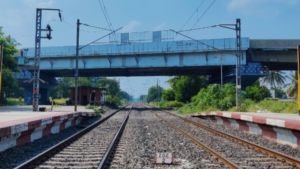
Image Credit (representational): Central Railway
- During the same period, a total of 36 RUBs were constructed at new ongoing project sites under the jurisdiction of NFR. 33 numbers of RUBs were constructed in Bihar at the ongoing Araria – Galgalia New Line Project, 02 in Nagaland at the ongoing Dimapur – Kohima New Line Project & 01 in Assam at Lumding – Barlangfer section.
- Under the policies of the Ministry of Railways, all the manned level crossing gates are targeted to be eliminated to improve safety in train operation, to increase mobility and to accelerate road crossing works. With the construction of ROBs & RUBs, the fatal accidents involving rail and road could be reduced to a great extent.
Sectional speed between New Jalpaiguri & Malda Town enhanced to 130 kmph:
- Speed trial at 130 Kmph was successfully conducted at the New Jalpaiguri – Malda section of N. F. Railway. The trial was conducted in both up & down directions i.e New Jalpaiguri – Malda (232 Km) & Malda – New Jalpaiguri (232 Km) section.
- The trial was conducted with a rake of 22 coaches consisting of LHB type stock including a coach for Oscillation Monitoring System. Augmentation of sectional speed has always been one of the top priorities of Indian Railways.
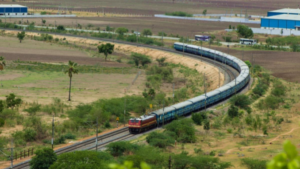
Image Credit (representational): MoR
- In Northeast Frontier Railway, New Jalpaiguri – Malda Town section was targeted for raising of sectional speed from 110 Kmph to 130 Kmph. As a procedural part, Confirmatory Oscillograph Car Run (COCR) was conducted satisfactorily on 07th January, 2024 prior to raising of sectional speed in the section to 130 Kmph from existing 110 Kmph.
- In the process, many works like increasing of super elevation, Transition Length of curves have been done so as to conform to enhanced speed incurring an amount of approximately Rs. 9 crores.
Upgradation of these infrastructures will lead to increase in operational speed of trains which will ease the travel time for passengers to a great extent. Post completion of these works, the section will be fit for introduction of 130 Kmph which will save approximately 20 minutes.
Economic Impact and Future Outlook
Upon completion, the new rail connectivity projects will not only facilitate easier access for passengers but also stimulate economic growth by enabling the efficient transportation of goods and materials. Additionally, the utilisation of solar energy underscores N.F. Railway’s commitment to sustainability and cost-effectiveness.
In conclusion, the progress made by Northeast Frontier Railway in railway construction and infrastructure development is poised to usher in a new era of connectivity, safety, and efficiency for the region, laying the groundwork for a brighter future.
Source: NFR- Press Release | Image Credit (representational): MoR

